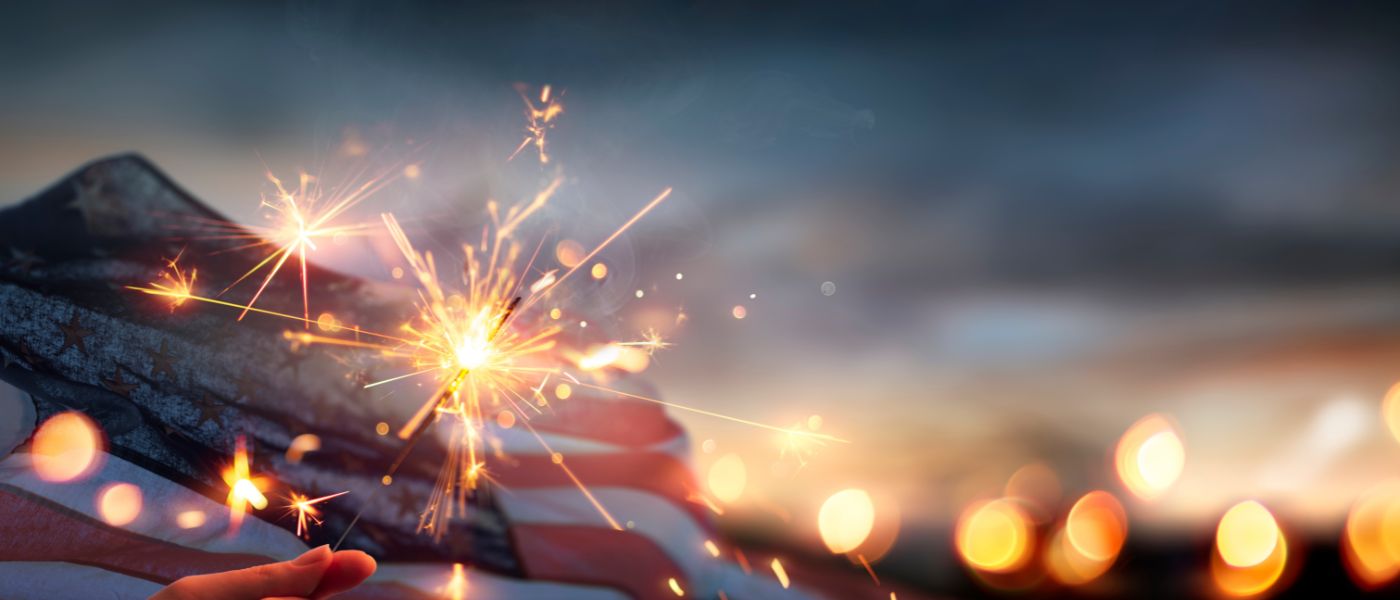Tomorrow (July 4), people around the country will celebrate Independence Day—the day the Declaration of Independence was officially adopted, marking the birth of the United States as an independent nation. Celebrations will be characterized by parades, cook-outs and the crackling of fireworks—all an evolution of something that began 248 years ago.
To learn more about the national holiday, The Daily sat down with John Grabowski, the former Krieger-Mueller Joint Professor in History at Case Western Reserve University.
Read on to glean some of Grabowski’s insights about Independence Day.
1. Fireworks and gunfire reflect the early martial celebrations of the day.
On the first anniversary of the signing of the Declaration of Independence in 1777, a round of 13 gunshots were fired in Bristol, Rhode Island—and in Philadelphia (the “seat” of the Revolution) there were thirteen-gun salutes, speeches, a dinner for the Continental Congress and fireworks. The following year, George Washington provided a double ration of rum for his soldiers and an artillery salute.
By the late 19th century, gun and cannon fire still found their way into the celebration, but the primary noise came from fireworks—both official displays and what one might call backyard displays. Most of the noise, however, came from easy access to rather inexpensive fireworks—and in crowded cities this became a problem as children were maimed and injured. Indeed, one could buy black powder and make a DIY explosive device.
Several major accidents in Cleveland (including the explosion of a fireworks factory situated in a crowded urban neighborhood) led to the Safe and Sane Fourth of July movement, which banned fireworks in the city. The movement then spread to other cities, and today, we continue to regulate what types of fireworks can be marketed and when they might be used.
2. Two signers of the Declaration of Independence died on its 50th anniversary.
By the 1820s, those who lived through or participated in the American Revolution had begun to dwindle. The last soldiers who fought in the war would die in the 1860s—most who lived to that time had served as very young soldiers. The story was a bit different for those who signed the Declaration of Independence as they were considerably older when they put pen to parchment.
In 1826, two of the last three died—and they died on the 50th anniversary of the signing of the document. The deaths of Thomas Jefferson and John Adams on July 4 of that year seemed, to many, to be something miraculous—perhaps, a divine “nod” to the importance of the creation of the United States. After their deaths only Charles Carroll of Maryland remained. He would die six years later.
3. The south stopped celebrating Independence Day during the Civil War.
Thirty-seven years later, during the midst of the American Civil War, July 4 again seemed to take on a psychic importance—most particularly for the north.
When the United States fractured during the Civil War, the Fourth of July survived for a short time as a holiday in both the north and the south, with the South wrongingly believing it was fighting for the principles set forth in the Declaration of Independence. But 1863 would be the last year the South would hold celebrations—for in that year, the tide of battle turned with United States victories at Gettysburg and Vicksburg, the former on July 3 and the victory at Vicksburg on July 4. For northerners, the timing seemed vindication of the cause for which they were fighting. For southerners, the two losses were a major blow, one that was exacerbated by a Union naval blockade that increasingly sapped the regional economy. In the remaining two bloody years of conflict, the south largely abandoned the celebration of the Fourth of July.

